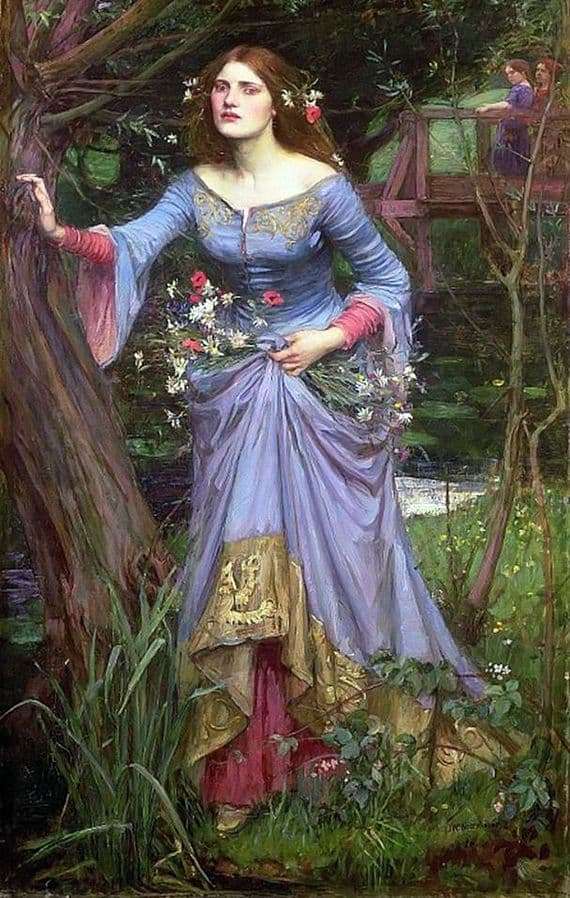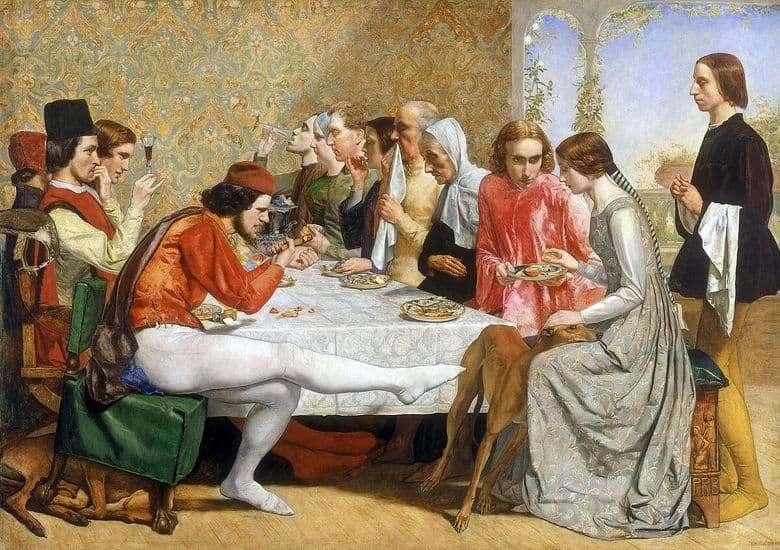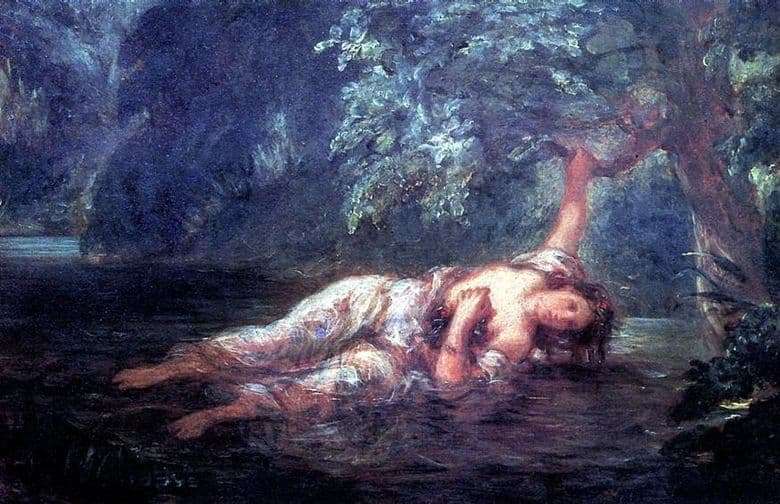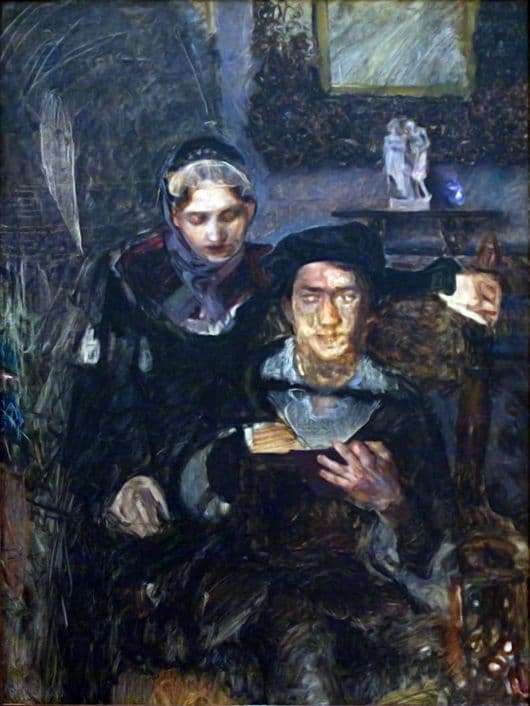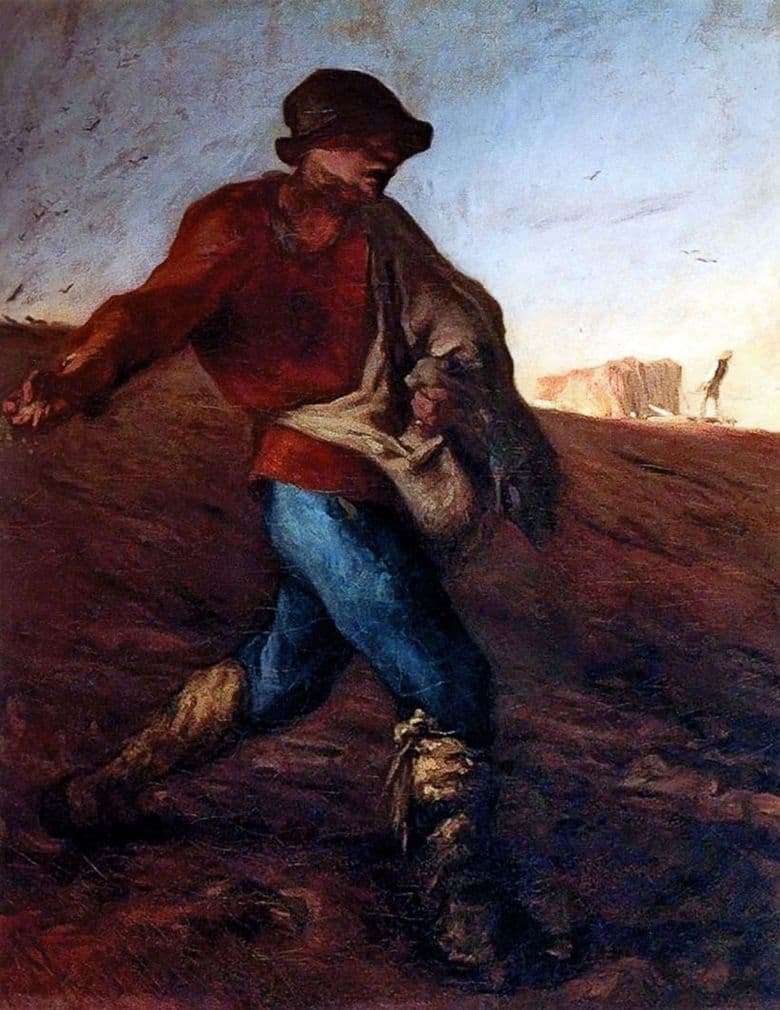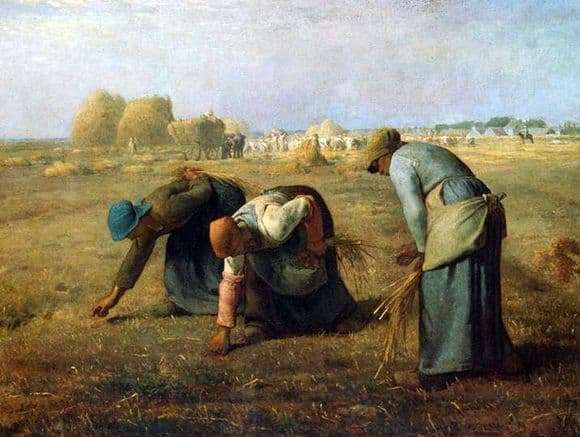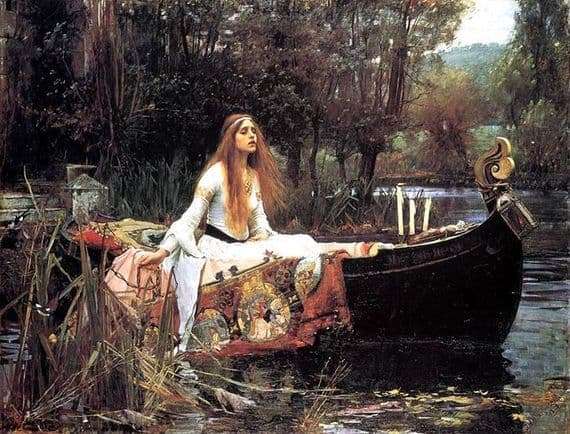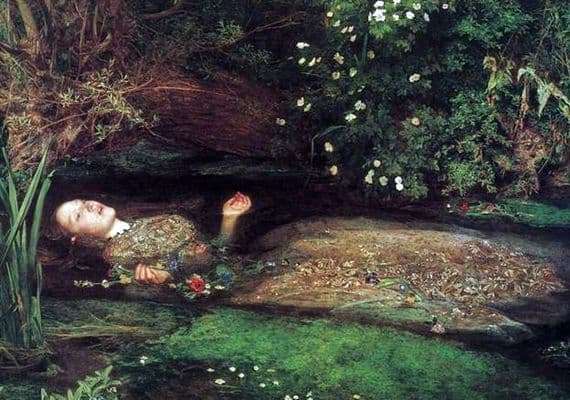
John Millet took the story from “Hamlet” as the basis for his picture “Ophelia”: the girl, having learned about the death of her father at the hands of her lover, killed herself. Here she is depicted at the very moment when she fell into the waters of the river. Her mouth is ajar: a girl performs sad songs. She stretched her arms to the side, her gaze rested on the sky – because of this, many relate her posture to the crucified Christ.
Ophelia is slowly sinking into the abysses of water amidst the sprawling wildlife. At the same time on the girl’s face does not show fear or anxiety. She seems to be striving to part with life as quickly as possible and is ready to meet death.
Fame to this work of the English artist brought detail in the image of nature. Even painted plants act as definite symbols: buttercups are ingratitude; willow that bent over the face of Ophelia – rejected love; nettle – pain; Chamomile is related to the maiden innocence.
Roses floating on the water, traditionally represent a symbol of love; the wilderness that the artist placed in the corner of the picture is the meaninglessness of the whole situation, the death of a young girl; forget-me-nots flooded the coast – loyalty; the scarlet adonis, passing by the hand, corresponds with grief; The pansies located above the dress of the drowned woman are unrequited love.
The tones used by Millet in his picture are saturated and very deep. Only the river is represented as a dark mass, similar to a swamp. She, like a shroud, gently embraces the girl, plunging into her abyss.
Interesting is the way the artist painted his work. Initially, he created the background: sitting in nature, Millet painted the landscape for hours. Then he moved to the studio, where a specially invited model lay for a long time in Ophelia’s pose in the bathroom, enduringly enduring the cold.
Description of the painting by John Millet “Ophelia”
